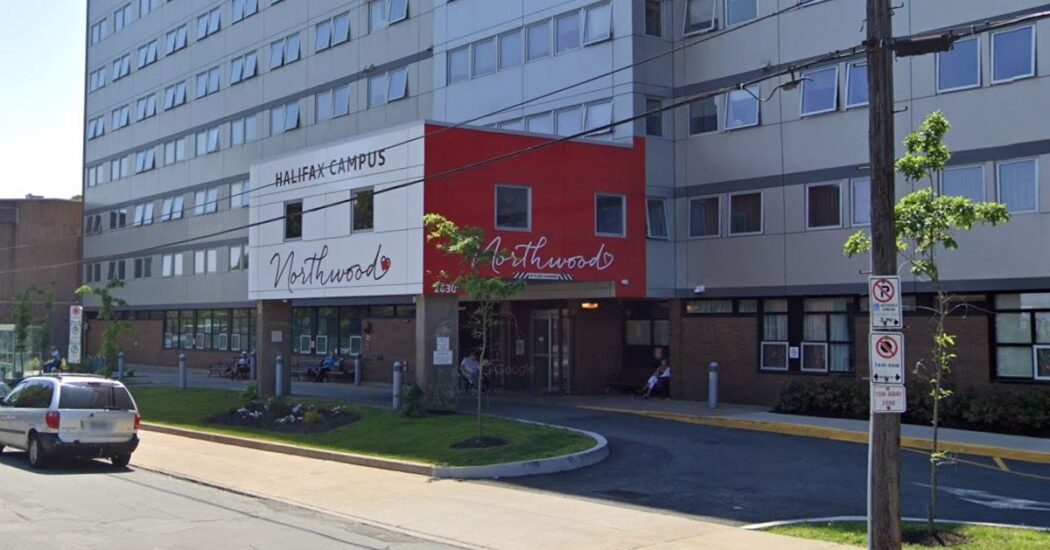
KJIPUKTUK (Halifax) – After taking a three-day break the premier and Nova Scotia’s chief medical officer presided over another COVID-19 media update on Tuesday. Since the last such briefing on April 24 the number of deaths in the province from the disease had increased by 70 per cent, going from 16 to 27. Ten of those deaths were at Northwood’s Halifax long-term care home where, over the same period, the number of confirmed cases among residents went up 42 per cent and the number of infected staff grew from 57 to 71.
Given those troubling numbers, I eavesdropped on the webcast of the April 28 update, anticipating some heartfelt expressions of regret from our leaders, some tough questioning from reporters or an effort to reassure residents of long term-care and their families that, as the Prime Minister is wont to say, “we have your back.”
I heard none of the above. Premier McNeil opened the briefing with a perfunctory acknowledgement of two new deaths announced on Tuesday (there were actually three) and “the ones reported over the weekend.” He seemed less concerned with the eleven deaths in three days than with that fact that the distancing rules in place for COVID-19 kept grieving relatives from visiting the dying.
Reporters, given 25 minutes to ask questions, lobbed only three softball inquiries about deaths in long-term care. Although McNeil has been politically vulnerable on the issue for years, the few questions about Northwood and long-term care were directed at the chief medical officer, Dr. Robert Strang. The questions gave Strang opportunity to answer with words of encouragement for residents, families and staff, but he gave that a pass.
Strang avoided speculation about the survival chances of the 200-plus residents of Northwood and the nine other homes who have already been diagnosed with the disease, but allowed as how “we are by no means out of the woods at Northwood.” No one asked what that may mean in terms of mortality rates, or whether the Northwood tragedy has provided any lessons that are being applied to prevent further outbreaks in the other 131 long-term care homes across the province.
Ageist response
While disappointing, the ho-hum post-mortem was not surprising. Deaths of seniors in long-term care seem to be taken for granted during this pandemic. One exception is CBC Nova Scotia reporter Michael Gorman – not part of Tuesday’s proceedings – who had an interesting piece last week that focused on the devastating impact of COVID-19 on people residing in long-term care homes.
Gorman interviewed Janice Keefe, a professor at Mount Saint Vincent University who was appointed by McNeil in 2018 to head a panel on long-term care. This came after digging by another exception to the journalistic rule, freelancer Jennifer Henderson, revealed appalling conditions in some homes, the result of chronic understaffing following years of spending restraint.
Commenting last week as the death count in Nova Scotia’s nursing homes hit 15 and the governments of Quebec and Ontario called on the military to bail out their care homes, Janice Keefe told Gorman that the effect of COVID-19 has been worsened by years of neglect of long-term care.
“It’s a sector that has been really under serviced, really viewed as the poor cousin of the rest of the health system, and this virus has really just exacerbated those cracks into full-blown chasms,” she said. As to why long-term care gets short shrift, Keefe cited ageism. “I think there’s a fundamental underlying ageism that is underway here. I hate to say that, but I think it’s true.”
If ageism has indeed been a factor in past failure to provide good long-term care it is also very much an element in the current political and media discourse, some of which downplays the severity of COVID-19 because it mostly affects older people.
A glaring example of the tendency is in Quebec, where despite more than 1,400 COVID-related deaths in nursing homes and a call for military help, the government’s current focus is on re-opening the economy. Nearly 200 died in Quebec nursing homes last Wednesday and Thursday, but the Globe and Mail headline from the Premier’s Friday briefing was “Plan to reopen province coming next week.”
Local deaths downplayed
That same sort of attitude was prevalent at Tuesday’s briefing by McNeil and Strang, where there were twice as many questions from reporters about a loan program for municipalities than there were about deaths in long term care. But the much-diminished Chronicle-Herald, where obits take up more space than news these days, gets the prize.
The Herald distinguished itself back in 2018 by carrying Jennifer Henderson’s investigative reports on long-term care, but the paper dropped the ball on the weekend deaths. The government newswire conveniently reported six of those deaths on Saturday and two on Sunday. There was no Sunday newspaper, but eight deaths on the weekend, seven of those at Northwood, should have been major headline news in Monday’s paper.
But no. The Herald front page had just a one-column story, headlined “Two more deaths reported at Northwood.” It’s five paragraphs into the story before we learn that these deaths are in addition to six that were reported on Saturday.
This example of burying the news may be the result of journalistic incompetence, or even a conscious decision not to alarm with scary headlines long-term care residents or families who still read the paper for more than the obits. More likely it’s a consequence of the notion in many quarters of the need to rally around our leaders during the pandemic. The Herald has been like a broken record on this. “Politicians shine in crisis” was the headline on the April 29 editorial. Even more to the point was Saturday’s editorial “Steve and Bob show popular” which gushed about the popularity of McNeil and Strang’s daily briefings.
“There’s a comfort factor there, as people who are being asked to make sacrifices look to their leaders for reassurance that it’s all worthwhile. That’s what they get from McNeil and Strang as the two reinforce the by-now-familiar refrains: stay home, wash your hands, keep your distance.”[1]
Look around
That basic three-part advice, which is everywhere these days, can and should be heeded. If the failure to protect seniors in long-term care is glossed over, as it has been, the Steve and Bob show may indeed be seen as a source of comfort. And compared with Quebec and Ontario, the mortality from the disease in Nova Scotia, while regrettable, seems inevitable. Unless, that is, you break ranks and compare Nova Scotia with the other seven provinces.
Do that and you will find that Nova Scotia’s failure to adequately protect nursing home residents resulted in Canada’s third worst rate of death from COVID-19. As of April 28, Nova Scotia’s rate was 27.5 per million population, well behind Quebec (197.6) and Ontario (64.3) but higher than British Columbia (21.1) and Alberta (16.9). As for the smaller provinces, Saskatchewan and Manitoba were at about four deaths per million. Our neighbouring Maritime Provinces reported no deaths as of that date while Newfoundland had only three.
British Columbia’s relatively low death rate may be surprising, given that the province recorded the country’s first death from COVID-19 in early March, part of an outbreak at Lynn Valley care in North Vancouver that made national headlines and caused a dozen deaths. But following that experience, British Columbia authorities introduced significant changes at long-term care facilities.
All staff were screened for symptoms and made to wear masks and gloves. Outside visitors were banned and care workers were prohibited from going from facility to facility. Sporadic outbreaks and deaths have continued in B.C., but as of this week there were only 391 active cases. In a province with more than five times our population, that’s not even twice the cases we have here.
Despite the early example from B.C. of what COVID-19 could do in nursing homes, Nova Scotia was slow in following B.C.’s example. The province banned visitors early on but did not begin screening staff and residents on a daily basis until early April. Citing procurement problems, Nova Scotia waited until April 13 to mandate wearing of surgical masks by front-line workers, and working in more than one facility is still allowed. Efforts to fight the virus by reducing the number of residents sharing rooms with one or two others didn’t begin until a week later.
Such critical analysis may be considered unseemly in some quarters, where uniting against the pandemic foe remains the priority. However, there are legitimate questions about the campaign so far, and they need to be asked sooner, not later. The disease is still prevalent, but Nova Scotians are being asked to take it on faith that what is taking place at Northwood won’t happen in the many other long-term and residential care facilities across the province. And with a second wave of the disease widely expected in the fall, it’s reasonable to start asking what we’ve learned so far and what we’re going to do in the months ahead to better prepare for the next onslaught.
[1] To be fair, the April 18 edition of the Herald gave space to an op ed by Kevin McNamara, a former deputy minister of health. His measured but devastating critique of the systemic failure in long-term care was tucked away at the bottom of the turn page of the Saturday Opinions section and does not seem to have influenced the news cycle.
Richard Starr is a former journalist, civil servant, political hack and seventh generation Nova Scotian. He is devoting his retirement to family, volunteer activities and writing about subjects that interest him and, he hopes, others at Starr’s Point, a Nova Scotia blog where facts matter, where this post was originally published.His most recent book “Equal as Citizens: the tumultuous and troubled history of a great Canadian idea” is about the history of equalization and the fiscal transfer system in Canada and came out in 2014.
With a special thanks to our generous donors who make publication of the Nova Scotia Advocate possible.
Subscribe to the Nova Scotia Advocate weekly digest and never miss an article again. It’s free!




Portapique and Northwood – Two Tales of 22 Citizens
Northwood — 22 no names, no families, no details, no history, no lived lives, no public/media interest, no memorials, no letters to the editor, no causes, no motives, no reasons (but not called senseless deaths), no one’s fault, no mistakes, no government involvement or causation, nothing here, move on.
This is a great article. Media, for the most part are not asking the challenging questions
It seems that information on the ongoing events at Northwood is blocked at every turn. They post their daily updates on their webpage. At least they have stopped referring to the deaths as being “peaceful”. An email was sent to Northwood on March 29th to advise them of fears of some of the residents as to people visiting between buildings, etc. A CBC news article published on April 4th also garnered very little interest in the subject. The treatment of our seniors during this pandemic speaks volumes.
I wonder why they say, “peaceful” death”. There is nothing peaceful about slowing drowning in your own fluids. I know what it feels like because I nearly died from pneumonia and it’s a nightmare. It’s like having a plastic bag over your head and you’re so weak, you can barely speak.
There needs to be an inquiry into what’s going on at Northwood. I agree with Richard, this should be front-page news and I’m sure it would be if the deaths were occurring in such large numbers in a younger population. Good for you for shining a light on this, Richard.